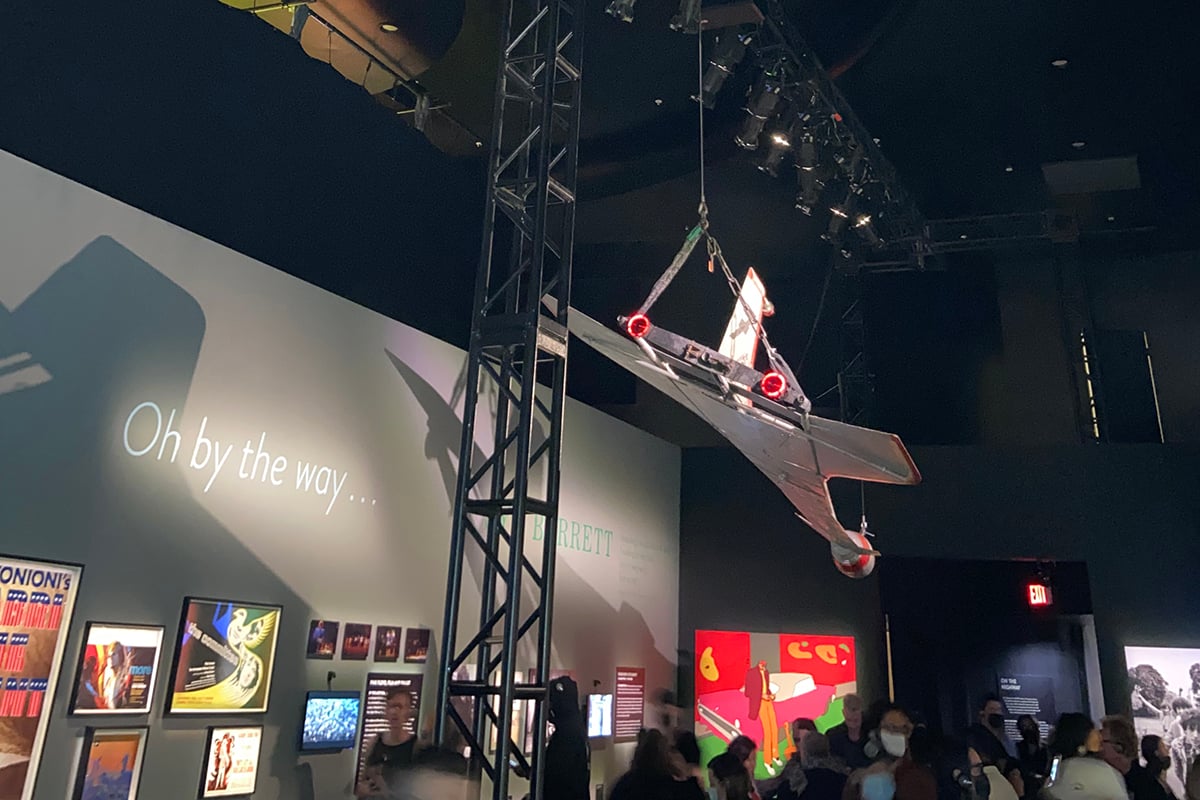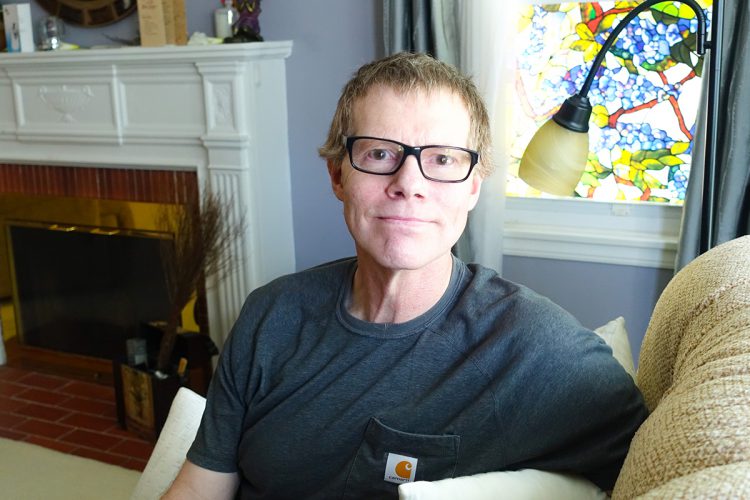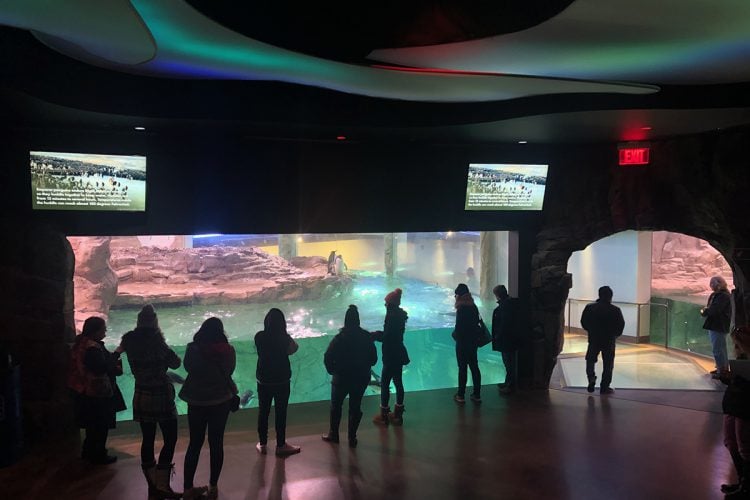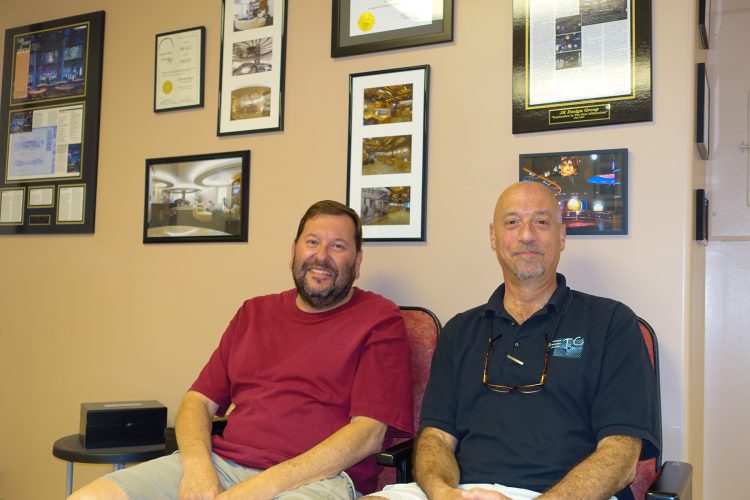Pink Floyd could never be accused of half-hearted productions. In the mid-seventies when their contemporaries were still using carousel projectors, they created a 32-foot-diameter circular screen lit by two 10,000-watt Xenon 35 mm projectors with custom lenses ground in France. When other bands were experimenting with primitive pyro, they opened their outdoor shows with a flyover by a squadron of RAF Spitfires.
When others were toying with fog machines and dry ice, they flooded the stage with liquid nitrogen from huge cylinders on a flatbed trailer. While others had crank-up lighting stands, they pioneered the use of triple ram Genie towers each with 16 par cans. While most bands stacked PA on the side of the stage, they had perfected Quadraphonic sound in arenas using racks of Phase Linear and Quad 303 high-end consumer amps.
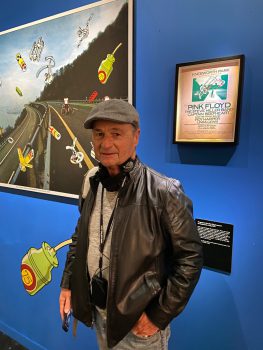
Pink Floyd changed the course of my life. In 1975 I was working as a production manager in London West End theatre when I had the chance to work on Pink Floyd’s huge outdoor concert at Knebworth House in the English countryside. My tasks were menial – running mains cables, intercom, and finally operating an onstage follow spot on show day. I had no idea that I was witnessing the final performance of Dark Side of The Moon with Roger Waters. The thrill of that event took me on a journey away from theatre into a new world of concert touring.
I found a kindred spirit at the technical rehearsals for The Pink Floyd Exhibition: Their Mortal Remains at the Vogue Multicultural Museum on Hollywood Boulevard.
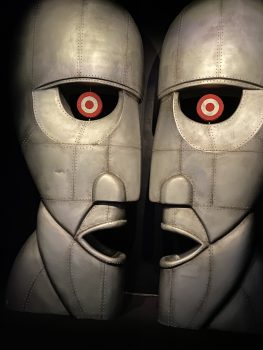
“I saw the Division Bell tour lit by Marc Brickman and that inspired me to get into the industry. I then worked with Brit Floyd (a UK tribute band) for three years – this is like coming full circle,” said Stu Dingley, production coordinator for Woodroffe Bassett, the creative design team for the exhibit. The immersive exhibit that chronicles the band’s progression from the Club scene to massive outdoor shows, is lit with the dramatic flair it deserves.
“When designing the exhibition, we wanted to ensure a consistent color temperature, illuminance, and CRI for all the artefacts. In addition, we wanted the ability to use ‘framing shutters’ to cut the lighting in around the objects being lit. From our experience of lighting the Rolling Stones Exhibition, Unzipped, we found great drama could be added to a gallery by only lighting the artefacts. We would then rely on the bounce off these artefacts to provide the ambient illumination within the room, utilizing frost just to bring the edge off the cuts,” explained John Coman of WBD.
Faced with the task of creating a design as exciting as the exhibits themselves, head lighting designer Patrick Woodroffe said, “The job called for a hybrid design. It involved the detailed, technical illumination of the exhibits making sure that there were no shadows and that the levels were of the right intensity to protect the artefacts. But there was also the need to bring some real drama and excitement into what was, in essence, a very static display.”
With little input from surviving band members, Woodroffe worked closely with Po (Aubrey Powell) who conceived and curated the exhibition working in collaboration with Stufish (the scenic design company) to get the balance of lighting, scenery, and video panels just right. To protect the artefacts, care was taken to maintain lux levels no higher than twenty, except in the case of drum kits which had already seen a lot of stage lighting.
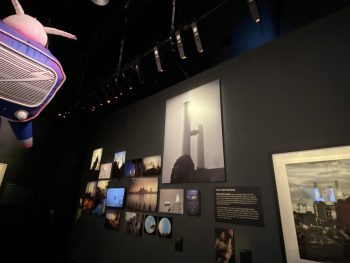
ETC fixtures are used in every display room within the labyrinthine converted theatre. Discreetly rigged into black trusses or high inside the false ceiling, the light sources are often hard to detect. Explaining his fixture choices Coman went on to say, “ETC products offered great and well-defined optic options, consistent color temperature, and rendering with theatrical performance level accuracy using shutters. ColorSources, Irideon profiles, and Source Four Mini LEDs were all specified for the original exhibition.”
In this all-LED rig, the profiles use a mixture of frost and ND filters to maintain a consistent 3500K color temperature. Sid Khera of Aspect Lighting, the local Los Angeles rental house, “scoured the country” to fill the fixture order. “We used 60 ColorSource profiles, 10 with Fresnel adaptors and 150 Source Four Minis and as many Irideons as we could lay our hands on.”
The home of the exhibit is as impressive as its displays. The Pink Floyd Exhibition: Their Mortal Remains, was introduced in 2017 at London’s Victoria and Albert Museum, and turned into the first attraction at the historic Vogue Multicultural Museum on Hollywood Boulevard in the middle of a bevy of tourist attractions. The landmark theatre has been shuttered since 1995, only used for the occasional film location or live performance. The exhibit is expected to run until January 2022.


